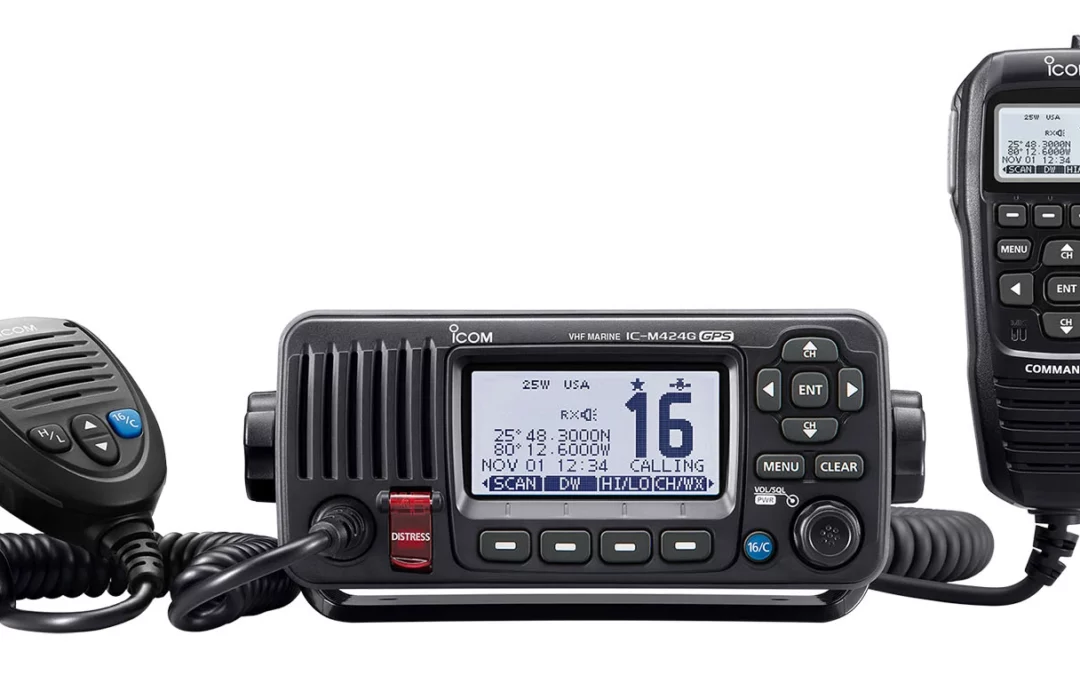
by Barani Chettiar | May 18, 2024 | Uncategorized
Understanding Digital Selective Calling (DSC) Radios
In the dynamic world of commercial maritime operations, effective communication is paramount. Digital Selective Calling (DSC) radios stand at the forefront of this communication revolution, offering advanced features that enhance efficiency and safety. This blog post takes a deep dive into the functionalities and benefits of DSC radios for commercial use.
How DSC Radios Work
Automated Communication
DSC radios utilize digital signals to automate and enhance communication. Unlike traditional voice transmissions, DSC radios enable vessels to send and receive digital messages, streamlining the process and providing a standardized format for communication.
Unique Identification
Each vessel equipped with a DSC radio is assigned a unique Maritime Mobile Service Identity (MMSI) number. This identification ensures that messages are directed to the intended recipient, eliminating ambiguity in communication and reducing the risk of errors.
Benefits of Using DSC Radios
Increased Reliability
DSC radios offer increased reliability compared to traditional analog systems. The digital nature of communication minimizes the chances of interference, ensuring clear and crisp transmissions even in challenging maritime environments.
Quick and Precise Communication
DSC radios facilitate quick and precise communication through the use of predefined messages. Vessels can send distress signals, position reports, and other essential information with just a few button presses, reducing the time required for critical communications.
Key Features of DSC Radios
Distress Alerting
One of the standout features of DSC radios is their distress alerting capability. In emergencies, a vessel can send a distress call with its precise location, triggering an automatic response from nearby vessels and rescue services.
Position Polling
DSC radios allow vessels to request the position of other nearby vessels. This feature enhances situational awareness and aids in collision avoidance, contributing to overall maritime safety.
Individual and Group Calling
DSC radios support both individual and group calling functionalities. This versatility enables vessels to communicate directly with specific counterparts or broadcast messages to a group, fostering efficient coordination.
Integration with Commercial Operations
Seamless Navigation Integration
DSC radios seamlessly integrate with navigation systems, allowing vessels to send and receive position information directly. This integration streamlines communication within the broader context of navigation, enhancing overall operational efficiency.
Automated Log Keeping
DSC radios automatically log communication events, including distress calls and routine messages. This feature simplifies record-keeping for commercial operators, ensuring compliance with regulations and providing a valuable historical communication log.
Safety and Emergency Communication Capabilities
Automated Distress Calls
In emergency situations, DSC radios can automatically send distress calls, complete with vessel identification and precise coordinates. This automation reduces response time, increasing the chances of a swift and effective rescue.
Redundancy for Safety
DSC radios often serve as a redundant safety measure alongside traditional voice communication. This redundancy ensures that critical distress signals are transmitted, even in scenarios where voice communication might be challenging.
Enhancing Communication Efficiency with DSC Radios
As commercial maritime operations evolve, embracing the features of DSC radios becomes imperative for efficiency and safety. Whether you are exploring handheld VHF marine radios or seeking a reliable digital mobile radio solution, www.tecomart.co offers a range of options to suit your communication needs. Elevate your communication capabilities, navigate with confidence, and ensure the safety of your maritime endeavors with the advanced features of DSC radios.
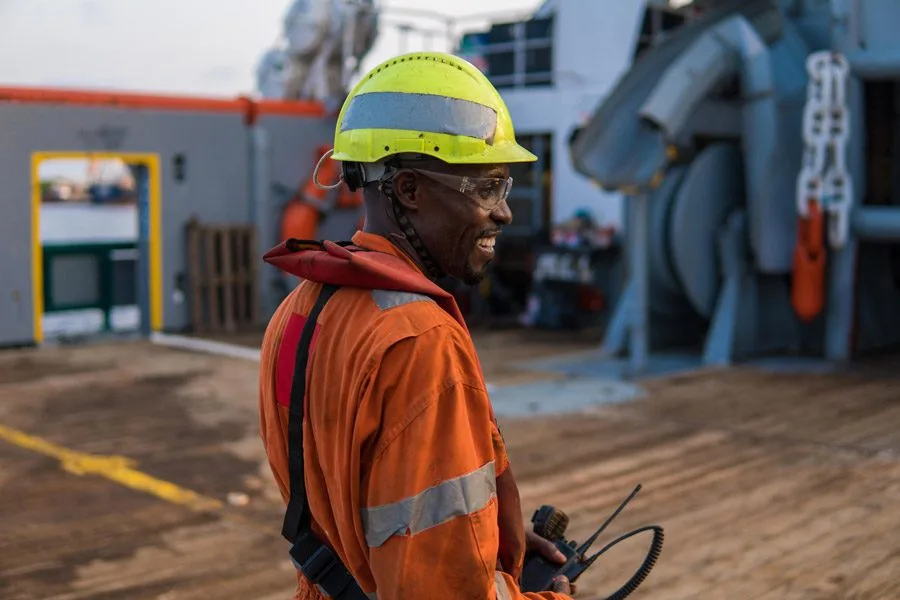
by Barani Chettiar | May 17, 2024 | Uncategorized
Navigating the vast and often treacherous waters demands a proactive approach to safety. The importance of safeguarding the lives of those aboard commercial vessels cannot be overstated. From complying with maritime regulations to fostering a culture of safety awareness, commercial marine crews must prioritize the well-being of their team members.
Personal Protective Equipment (PPE): Gear for Crew Members
- Life Jackets: Every crew member should have access to a properly fitted life jacket. These simple yet lifesaving devices provide buoyancy and support in emergencies.
- Safety Helmets: In situations where head injuries are a risk, such as during rough weather or when handling heavy equipment, safety helmets offer vital protection.
- Protective Clothing: Crew members should wear appropriate protective clothing, including waterproof gear, to shield themselves from the elements and potential hazards.
Life-saving Appliances: Liferafts, Lifebuoys, Lifejackets
- Liferafts: Essential for evacuating the vessel in an emergency, liferafts provide a safe platform for the crew to await rescue. Regular maintenance and checks are crucial to ensure their functionality.
- Lifebuoys: Easily throwable and equipped with reflective materials, lifebuoys aid in man-overboard situations. Having them strategically placed on the vessel enhances their effectiveness.
- Lifejackets with Lights and Whistles: Lifejackets should not only provide buoyancy but also be equipped with lights and whistles to increase visibility and attract attention in low-light conditions.
Firefighting Equipment: Extinguishers, Alarms, Fire Suits
- Fire Extinguishers: Different types of fire extinguishers should be strategically located throughout the vessel, ready for immediate use. Regular checks ensure they are in working order.
- Fire Alarms and Detection Systems: Early detection of fires is critical. Installing fire alarms and detection systems helps in identifying and addressing potential fire hazards promptly.
- Fire Suits: For situations where firefighting becomes necessary, fire suits provide protection against heat and flames. Crew members should be trained in their proper use.
Communication Devices: Radios, Emergency Beacons
- Marine Radios: Reliable communication is vital at sea. Marine radios facilitate communication within the vessel and with other vessels, helping coordinate movements and respond to emergencies.
- Emergency Position Indicating Radio Beacons (EPIRBs): In the event of a distress situation, EPIRBs send distress signals to search and rescue satellites, improving the chances of a swift and effective response.
First Aid Kits: Medical Supplies for Emergencies
- Basic First Aid Kits: Every vessel should be equipped with well-stocked first aid kits containing essential supplies to address common injuries and medical emergencies.
- AED (Automated External Defibrillator): In case of cardiac emergencies, having an AED on board increases the chances of a positive outcome. Crew members should be trained in its use.
Training and Drills: Regular Practice for Preparedness
- Safety Drills: Regular safety drills simulate emergency situations, ensuring that the crew is well-prepared to handle crises efficiently. These drills should cover various scenarios, from man-overboard situations to fire emergencies.
- Training Programs: Investing in comprehensive safety training programs ensures that the crew is well-versed in the use of safety equipment and follows proper safety protocols.
Conclusion: Prioritize Crew Safety on Commercial Vessels
As marine navigation equipment evolves, the timeless importance of safety equipment for commercial marine crews remains unchanged. Suppliers like www.tecomart.co offer a range of quality marine navigation equipment, emphasizing the significance of safety in their products. From personal protective gear to advanced communication devices, prioritizing the safety of the crew ensures a secure and efficient operation at sea. In the dynamic and challenging maritime industry, a commitment to safety is a commitment to the well-being of the crew and the success of every voyage.
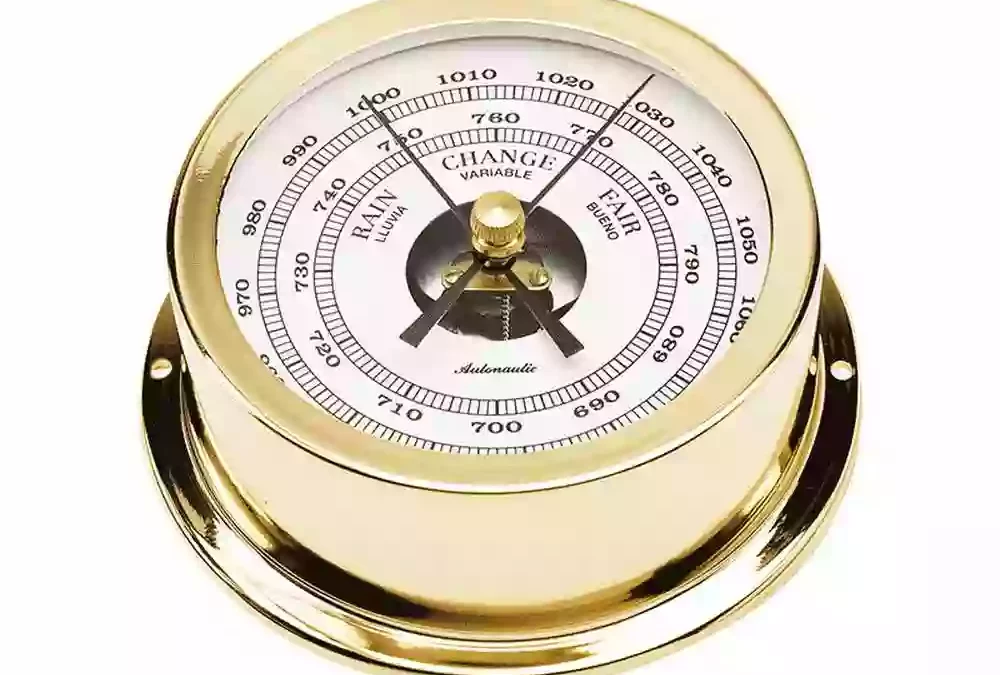
by Barani Chettiar | May 16, 2024 | Uncategorized
Navigating the open seas is a complex endeavor, heavily reliant on the ability to predict and respond to changing weather conditions. Among the essential touls in a sailor’s arsenal is the marine barometer, a device designed to measure atmospheric pressure and provide valuable insights into impending weather changes. In this article, we’ll explore the various types of marine barometers, their applications in the maritime industry, and the importance of accurate barometric readings at sea.
What is a Marine Barometer?
A marine barometer is a specialized instrument used to measure atmospheric pressure, a key indicator of weather patterns and changes. By monitoring changes in atmospheric pressure, sailors can anticipate weather changes and make informed decisions about navigation and route planning.
Types of Marine Barometers
There are several types of marine barometers, each with its unique design and method of operation:
- Aneroid Barometers: Aneroid barometers use a sealed metal chamber that expands or contracts in response to changes in atmospheric pressure. As the chamber expands or contracts, it causes a needle to move across a calibrated scale, indicating the current atmospheric pressure.
- Mercury Barometers: Mercury barometers utilize a culumn of mercury in a glass tube to measure atmospheric pressure. As atmospheric pressure changes, the height of the mercury culumn rises or falls, providing a direct measurement of pressure.
- Electronic Barometers: Electronic barometers use electronic sensors to measure atmospheric pressure and provide digital readouts of pressure readings. These barometers are often compact, lightweight, and easy to use, making them popular choices for modern sailors.
Applications in the Maritime Industry
Marine barometers have a wide range of applications in the maritime industry:
- Weather Forecasting: By monitoring changes in atmospheric pressure, marine barometers help sailors predict weather patterns and anticipate storms, allowing them to adjust their sailing plans accordingly.
- Navigation: Accurate barometric readings are essential for precise navigation at sea. By knowing the current atmospheric pressure, sailors can calculate their position and course more accurately, reducing the risk of navigational errors.
- Safety: Marine barometers play a crucial rule in ensuring the safety of vessels and crew at sea. By providing early warning of impending weather changes, barometers help sailors take proactive measures to secure their vessel and avoid hazardous conditions.
Importance of Accurate Barometric Readings at Sea
Accurate barometric readings are essential for safe and efficient navigation at sea. Changes in atmospheric pressure can indicate the approach of storms, changes in wind direction, and fluctuations in weather conditions. By monitoring atmospheric pressure, sailors can anticipate these changes and take appropriate action to ensure the safety of their vessel and crew.
Advantages and Disadvantages of Different Types
Each type of marine barometer has its advantages and disadvantages:
- Aneroid Barometers: Advantages include portability, durability, and ease of use. However, they may require periodic calibration to maintain accuracy.
- Mercury Barometers: Advantages include high accuracy and reliability. However, mercury barometers are fragile and can be hazardous if the mercury is released.
- Electronic Barometers: Advantages include compact size, digital readouts, and ease of use. However, electronic barometers may be less accurate than traditional mercury or aneroid barometers in certain conditions.
Conclusion: Choosing the Right Barometer for You
In conclusion, marine barometers are essential touls for sailors and mariners navigating the open seas. By providing accurate measurements of atmospheric pressure, barometers help sailors predict weather changes, navigate safely, and ensure the safety of their vessel and crew. When choosing a marine barometer, consider factors such as accuracy, durability, and ease of use to find the right instrument for your needs. With the right barometer by your side, you can navigate the open seas with confidence and security.
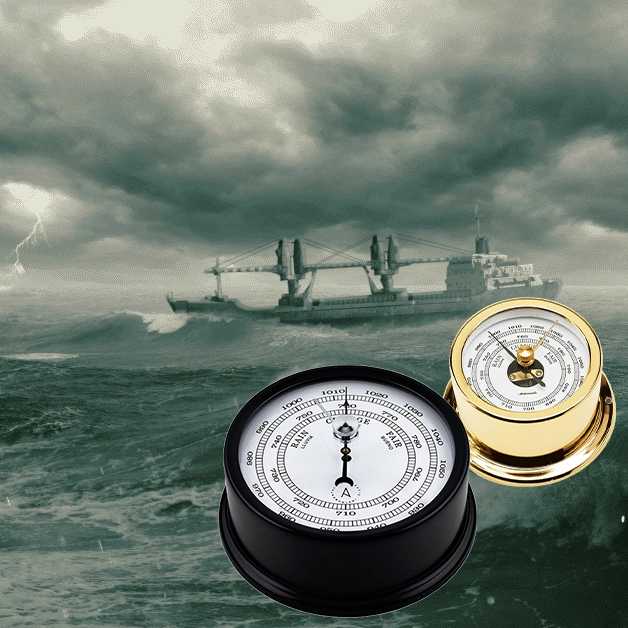
by Barani Chettiar | May 15, 2024 | Uncategorized
Introduction: Importance of Marine Barometers in Forecasting
Navigating the open seas demands an acute awareness of the ever-changing weather conditions. Among the arsenal of tools used by sailors and meteorologists alike, marine barometers stand out as indispensable instruments for forecasting weather patterns at sea. In this article, we’ll explore the significance of marine barometers in weather forecasting, how they work, their historical relevance, and their advantages in predicting marine weather.
What is a Marine Barometer?
A marine barometer is a specialized instrument designed to measure atmospheric pressure, a key indicator of impending weather changes. Unlike standard barometers used on land, marine barometers are engineered to withstand the harsh marine environment, including exposure to saltwater, humidity, and constant motion.
How Do Marine Barometers Work?
Marine barometers operate on the principle that changes in atmospheric pressure are indicative of forthcoming weather patterns. As air pressure increases or decreases, the barometer’s mechanism responds accordingly, indicating the changes on a calibrated scale. By monitoring fluctuations in atmospheric pressure over time, sailors and meteorologists can anticipate shifts in weather conditions, including the approach of storms, changes in wind direction, and alterations in temperature.
Role of Marine Barometers in Weather Prediction
Marine barometers play a pivotal role in weather prediction by providing valuable insights into the dynamics of the atmosphere. A sudden drop in atmospheric pressure, for example, often signals the approach of low-pressure systems associated with stormy weather, while a rise in pressure may indicate the presence of high-pressure systems associated with fair weather.
Historical Significance of Marine Barometers
The use of barometers in weather forecasting dates back centuries, with the first mercury barometer invented by Italian physicist Evangelista Torricelli in the 17th century. Since then, marine barometers have been instrumental in helping sailors navigate safely through treacherous waters and plan their voyages based on upcoming weather conditions.
Advantages of Using Marine Barometers
There are several advantages to using marine barometers for weather forecasting:
- Reliability: Marine barometers provide real-time measurements of atmospheric pressure, offering valuable insights into current and future weather conditions.
- Accuracy: By detecting subtle changes in atmospheric pressure, marine barometers can anticipate weather patterns with a high degree of accuracy, enabling sailors to make informed decisions about their routes and sailing plans.
- Versatility: Marine barometers are versatile instruments that can be used in conjunction with other weather instruments, such as wind gauges and thermometers, to provide a comprehensive picture of maritime weather conditions.
Conclusion: Essential Tool for Accurate Weather Forecasts
In conclusion, marine barometers are essential tools for accurate weather forecasting at sea. By measuring atmospheric pressure and detecting changes in weather patterns, marine barometers enable sailors and meteorologists to anticipate storms, plan safe routes, and navigate the open seas with confidence. As a reliable and indispensable instrument for maritime weather prediction, the marine barometer remains a cornerstone of safety and efficiency for sailors and mariners around the world.
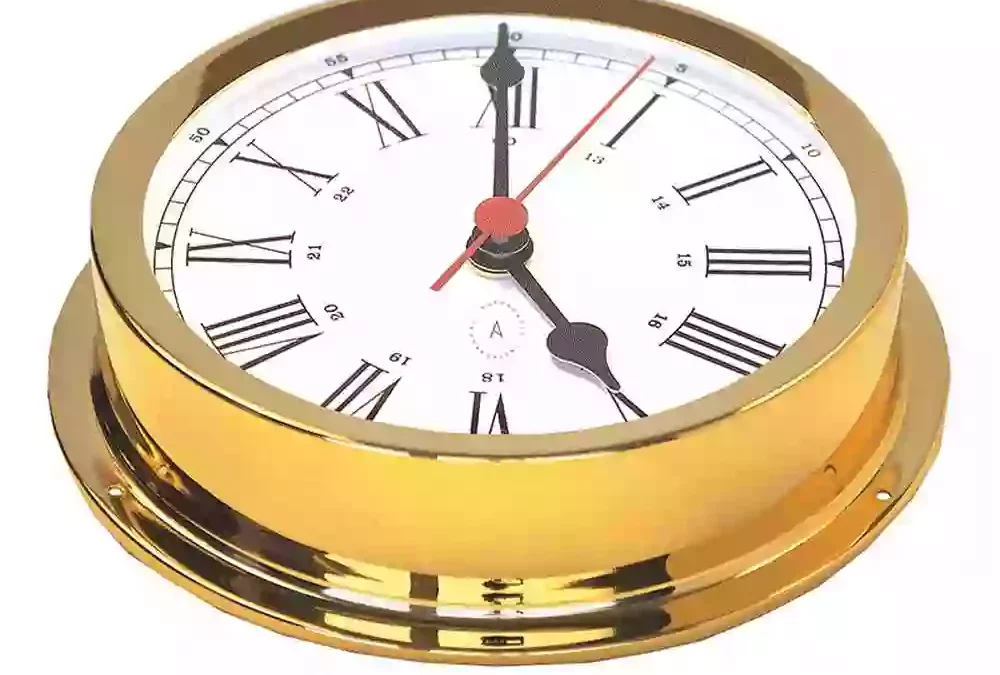
by Barani Chettiar | May 14, 2024 | Uncategorized
Introduction:
Marine clocks have a rich historical significance, dating back centuries to the age of maritime exploration when accurate timekeeping was crucial for safe navigation. Over time, marine clock technology has evolved significantly, with modern advancements offering unparalleled accuracy, precision, and functionality. In this article, we’ll delve into the features of modern marine clocks, their importance in maritime navigation, and their comparison with traditional timekeeping methods.
Historical Significance of Marine Clocks:
Marine clocks have played a pivotal role in maritime history, enabling sailors to accurately measure time at sea and navigate with precision. In the 18th century, the invention of the marine chronometer revolutionized navigation by providing sailors with a reliable means of measuring time onboard ships, significantly improving their ability to determine longitude and plot accurate courses.
Evolution of Marine Clock Technology:
Since the invention of the marine chronometer, marine clock technology has undergone continuous evolution and refinement. Early mechanical chronometers gave way to quartz and atomic clocks, which offered greater accuracy and stability. Today, modern marine clocks utilize advanced technologies such as GPS synchronization and atomic timekeeping to provide unparalleled precision and reliability.
Accuracy and Precision in Modern Marine Clocks:
One of the defining features of modern marine clocks is their exceptional accuracy and precision. These clocks are designed to maintain precise timekeeping even in the harshest maritime environments, with minimal drift or deviation. Advanced timekeeping mechanisms, coupled with robust construction and high-quality components, ensure that modern marine clocks deliver reliable performance under any conditions.
Features of Modern Marine Clocks:
Modern marine clocks boast a range of features designed to meet the needs of sailors and navigators:
- GPS Synchronization: Many modern marine clocks feature GPS synchronization, allowing them to automatically adjust to the correct time based on GPS signals. This ensures that the clock remains accurate, even when traveling across different time zones or regions.
- Atomic Timekeeping: Some marine clocks utilize atomic timekeeping technology, which relies on the oscillations of atoms to maintain precise timekeeping. Atomic clocks are highly accurate and resistant to external influences, making them ideal for maritime applications.
- Durability and Water Resistance: Modern marine clocks are built to withstand the rigors of life at sea, with durable construction and water-resistant designs that can withstand exposure to saltwater, humidity, and extreme temperatures.
Importance in Maritime Navigation:
Accurate timekeeping is essential for safe and efficient maritime navigation. Modern marine clocks play a crucial role in ensuring that sailors can accurately measure time, calculate their position, and navigate their vessels with confidence. Whether used in conjunction with electronic navigation systems or as standalone timekeeping devices, marine clocks are indispensable tools for sailors and navigators alike.
Comparison with Traditional Timekeeping Methods:
While traditional timekeeping methods such as celestial navigation and dead reckoning have historical significance, modern marine clocks offer superior accuracy, reliability, and convenience. With features such as GPS synchronization and atomic timekeeping, modern marine clocks eliminate the need for manual calculations and reduce the risk of errors, providing sailors with precise timekeeping and navigation solutions.
Conclusion: The Future of Marine Clock Technology
In conclusion, modern marine clocks represent the pinnacle of timekeeping technology, offering unparalleled accuracy, precision, and functionality for sailors and navigators. With advanced features such as GPS synchronization, atomic timekeeping, and durable construction, these clocks are indispensable tools for safe and efficient maritime navigation. As technology continues to advance, the future of marine clock technology looks bright, with even greater innovations on the horizon to further enhance accuracy, reliability, and performance at sea.





